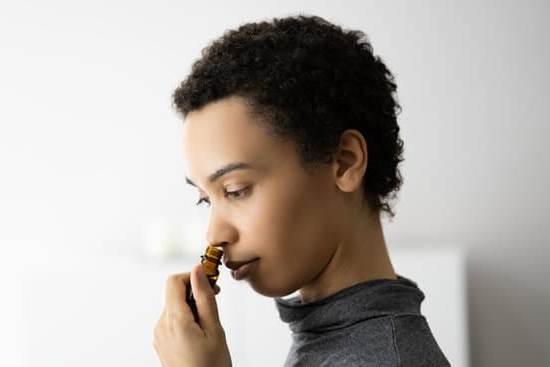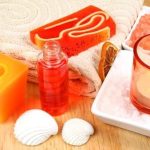Aromatherapy is a holistic healing treatment that uses natural plant extracts to promote health and well-being. Lavender, known for its calming and soothing properties, is one of the most popular essential oils used in aromatherapy practices. The question that many wonder about: is lavender good for aromatherapy? Let’s delve into the world of aromatherapy and explore the benefits of incorporating lavender into your wellness routine.
Used for centuries, lavender holds a prestigious place in the history of aromatherapy. Ancient civilizations like the Egyptians and Romans utilized lavender for its therapeutic effects on the mind and body. Its sweet floral scent has been revered for its ability to induce relaxation, improve sleep quality, reduce anxiety, and alleviate stress. As we trace back through time, it becomes apparent that lavender’s reputation as a versatile essential oil has stood the test of time.
The science behind aromatherapy and lavender lies in the aromatic compounds present in the essential oil. When inhaled or applied to the skin, these compounds interact with the limbic system of the brain, influencing emotions, mood, and physiological responses. Research has shown that lavender can help lower heart rate, reduce blood pressure, improve sleep quality, and promote feelings of calmness. This evidence-based approach supports the use of lavender in aromatherapy as an effective tool for enhancing overall well-being.
History of Lavender in Aromatherapy
Lavender has a long and rich history when it comes to its use in aromatherapy. Dating back centuries, lavender has been valued for its calming and soothing properties, making it a popular choice for relaxation and stress relief. The ancient Egyptians used lavender in their embalming process and as a perfume, while the Romans utilized it for bathing, cooking, and scenting the air. In the Middle Ages, lavender was often used for medicinal purposes due to its antiseptic properties.
Over time, lavender continued to be a staple in traditional medicine practices across different cultures. It was commonly used to alleviate headaches, insomnia, anxiety, and even as an insect repellent. As the field of aromatherapy gained popularity in more recent times, lavender essential oil emerged as one of the most versatile and widely used oils in holistic healing practices.
Today, lavender remains a key player in the world of aromatherapy due to its wide range of therapeutic benefits. Its gentle floral scent is known to promote relaxation, reduce stress levels, improve sleep quality, and even relieve pain. Whether used on its own or blended with other essential oils, lavender is a go-to option for those looking to enhance their well-being through the power of aromatherapy.
- Ancient Egyptians used lavender in embalming and perfumes
- Romans utilized lavender for bathing, cooking, and scenting
- Lavender was commonly used in traditional medicine practices throughout history
The Science Behind Aromatherapy and Lavender
Aromatherapy is the practice of using essential oils and plant extracts for therapeutic purposes, such as improving physical, emotional, and mental well-being. Lavender is one of the most popular and versatile essential oils used in aromatherapy due to its soothing and calming properties. But what exactly makes lavender so beneficial for aromatherapy?
Lavender essential oil is known for its anti-inflammatory, antimicrobial, and antioxidant properties. When inhaled through aromatherapy, the scent of lavender can help reduce stress, anxiety, and even improve sleep quality. Research has shown that inhaling lavender essential oil can have a positive effect on the nervous system by promoting relaxation and reducing feelings of tension.
One study published in the International Journal of Neuroscience found that participants who inhaled lavender essential oil experienced a decrease in mental stress and an increase in cognitive performance compared to those who did not inhale the oil. This suggests that lavender can have a powerful impact on both the mind and body when used in aromatherapy practices.
Overall, the science behind why lavender is good for aromatherapy lies in its ability to positively influence mood, emotions, and overall well-being.
| Benefit | Effect |
|---|---|
| Reduces stress | Promotes relaxation |
| Improves sleep quality | Calms the mind |
| Anti-inflammatory properties | Supports physical well-being |
Benefits of Using Lavender in Aromatherapy
Lavender is a versatile and popular essential oil used in aromatherapy for its numerous benefits. Here are some of the key advantages of incorporating lavender into your aromatherapy routine:
1. Calming and Relaxing Properties: Lavender is well-known for its calming effects on the mind and body. It can help reduce stress, anxiety, and promote relaxation. Inhaling lavender essential oil through diffusion or topical application can create a sense of peace and tranquility.
2. Improved Sleep Quality: One of the most common uses of lavender in aromatherapy is to promote better sleep. The soothing scent of lavender has been shown to help individuals fall asleep faster, stay asleep longer, and improve overall sleep quality.
3. Pain Relief: Lavender essential oil has analgesic properties that can help alleviate various types of pain, including headaches, muscle aches, and joint discomfort. When used topically with a carrier oil, lavender may provide relief from minor pains and inflammation.
4. Skin Care Benefits: Lavender is beneficial for skin health due to its antibacterial and anti-inflammatory properties. It can help soothe irritated skin, reduce redness, and promote healing of minor cuts or burns when applied topically.
5. Mood Enhancement: Aromatherapy with lavender can positively impact mood by uplifting spirits, promoting emotional balance, and reducing feelings of irritability or tension. Whether used in a diffuser or as part of a massage blend, lavender can contribute to an overall sense of well-being.
Incorporating lavender into your aromatherapy practice can bring about these benefits along with other potential advantages for your mental, emotional, and physical well-being. Experiment with different methods of using lavender essential oil to find what works best for you and enhances your overall quality of life.
So, is lavender good for aromatherapy? Based on its wide range of therapeutic properties and centuries-old history in healing practices around the world, it’s safe to say that lavender indeed holds great potential as a beneficial tool in aromatherapy routines.
How to Use Lavender for Aromatherapy
Lavender is considered one of the most versatile essential oils for aromatherapy due to its soothing and calming properties. There are various ways to use lavender for aromatherapy, depending on personal preferences and the desired effects. One popular method is through diffusion, where a few drops of lavender essential oil are added to a diffuser with water and allowed to disperse throughout the room. This can help create a relaxing atmosphere and promote better sleep.
Another way to utilize lavender for aromatherapy is through topical application. It is important to note that essential oils should never be applied directly to the skin without being diluted in a carrier oil first. For lavender, mixing a few drops with a neutral carrier oil like coconut or almond oil can create a calming massage blend for relaxation or stress relief. This method allows the skin to absorb the aromatic compounds of lavender, providing both physical and emotional benefits.
Additionally, incorporating lavender essential oil into bath time can enhance the overall experience and promote relaxation. By adding a few drops of lavender oil to a warm bath, the soothing scent can envelop you in calmness while also potentially helping with muscle tension relief. This method combines the benefits of both inhalation and topical application for a holistic approach to aromatherapy with lavender.
| Method | Description |
|---|---|
| Diffusion | Adding a few drops of lavender essential oil to a diffuser with water for inhalation. |
| Topical Application | Mixing lavender oil with carrier oil for massage or direct application on specific areas. |
| Bath Time | Adding a few drops of lavender oil to warm bath water for relaxation and muscle tension relief. |
Different Types of Lavender Essential Oils for Aromatherapy
Lavender essential oil is one of the most popular choices in aromatherapy due to its versatility and numerous benefits. However, it is essential to note that there are different types of lavender essential oils available on the market, each with its unique properties and benefits for aromatherapy.
Lavandula Angustifolia (True Lavender)
One of the most common types of lavender essential oil used in aromatherapy is Lavandula angustifolia, also known as true lavender. This type of lavender oil is known for its calming and relaxing properties, making it ideal for reducing stress and anxiety. True lavender essential oil has a sweet, floral aroma that is soothing and promotes a sense of well-being when used in aromatherapy practices.
Lavandula X Intermedia (Lavandin)
Another type of lavender essential oil commonly used in aromatherapy is Lavandula x intermedia, also known as lavandin. Lavandin essential oil is a hybrid of true lavender and spike lavender, resulting in a more robust scent compared to true lavender. Lavandin oil is often used for its antiseptic and pain-relieving properties, making it a popular choice for alleviating headaches or muscle tension through aromatherapy practices.
Lavandula Stoechas (French Lavender)
Lavandula stoechas, or French lavender, is another variety of lavender essential oil used in aromatherapy. French lavender has a slightly different chemical composition compared to true lavender, giving it distinct therapeutic benefits. French lavender essential oil is often favored for its ability to improve respiratory conditions and promote restful sleep when diffused or applied during aromatherapy sessions.
Overall, the variety of lavender essential oils available provides flexibility in selecting the right option based on individual needs and desired outcomes when incorporating aromatherapy into wellness routines.
Potential Side Effects or Precautions When Using Lavender for Aromatherapy
When using lavender for aromatherapy, it is important to be aware of potential side effects and precautions to ensure a safe and effective experience. While lavender is generally considered safe for most people, there are some individuals who may experience adverse reactions. It is always recommended to perform a patch test on a small area of skin before using lavender essential oil topically to avoid any allergic reactions or skin sensitivities.
One potential side effect of using lavender in aromatherapy is skin irritation, especially when applied in its concentrated form directly on the skin. It is advisable to dilute lavender essential oil with a carrier oil such as coconut or almond oil before applying it topically. Additionally, if you have sensitive skin, it might be best to consult with a healthcare professional before incorporating lavender into your aromatherapy routine.
Another precaution when using lavender for aromatherapy is to avoid ingesting the essential oil. Ingesting lavender oil can be toxic and may cause nausea, vomiting, or other serious complications.
It is important to always use essential oils externally and consult with an aromatherapist or healthcare provider if you have any questions or concerns about the proper use of lavender for aromatherapy purposes. Remember that the key to using lavender safely in aromatherapy is moderation and proper dilution to prevent any negative effects.
Conclusion
In conclusion, it is evident that lavender is indeed a highly effective and versatile essential oil for aromatherapy. Throughout history, lavender has been valued for its numerous therapeutic properties and calming effects on the mind and body. The science behind aromatherapy supports the use of lavender as a powerful tool for promoting relaxation, reducing anxiety, improving sleep quality, and even relieving headaches and pain.
The benefits of using lavender in aromatherapy are plentiful, making it a popular choice among both beginners and experienced users. Lavender essential oil can be used in various ways, such as through diffusion, topical application, or adding a few drops to bathwater. Its soothing aroma can help create a peaceful environment, reduce stress levels, and enhance overall well-being.
While lavender is generally safe to use for most people, it is important to take precautions when incorporating it into your aromatherapy routine. Some individuals may experience skin irritation or allergic reactions to lavender oil, so performing a patch test before widespread use is recommended.
Overall, when used properly and in moderation, lavender proves to be a valuable asset in the world of aromatherapy, offering a natural and holistic approach to improving both physical and mental health. So to answer the question posed by this article’s title: Yes, lavender is indeed good for aromatherapy.
Frequently Asked Questions
Is Lavender Aromatherapy Safe?
Lavender aromatherapy is generally considered safe for most people when used appropriately. However, some individuals may experience skin irritation or allergic reactions when using lavender essential oil directly on the skin. It is always recommended to do a patch test before widespread use.
What Are the Side Effects of Lavender Aromatherapy?
The side effects of lavender aromatherapy are usually mild and rare when used properly. Some potential side effects may include headache, nausea, or allergic reactions in sensitive individuals. Overuse of lavender essential oil can also cause skin irritation or sensitization.
Is Lavender Good to Inhale?
Inhaling lavender aroma is often associated with various health benefits, such as promoting relaxation and reducing stress and anxiety. The scent of lavender has been shown to have a calming effect on the nervous system, making it a popular choice for aromatherapy to improve sleep quality and overall well-being.

Are you looking for a natural way to improve your health and wellbeing?
If so, aromatherapy may be the answer for you.






